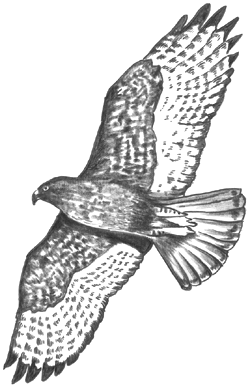 Name
________________________________
Name
________________________________
1. Genus is the latin word for _______________________
2. What is taxonomy? ______________________________________________________________
3. Linnaeus's classification system described an animal in [ one | two ] words.
This system was called: ___________________________________________________
4. Oak trees are placed into the genus _______________________________
5. The scientific name for a red oak is ______________________. The scientific
name for a willow oak is: ________________________
6. The first letter of a genus name is always [ capitalized | lowercase ] while
the first letter of the species name is always [ capitalized | lowercase].
7. Scientific names are always italicized or _____________________________________
8. The name given to a species must conform to the rules established by an _____________________________
9. The scientific name of a bluebird in Utah should be [ different | the same
] as a bluebird in Texas.
10. List the six kingdoms. ____________________________________________________________________
11. (see fig 15-2)A kingdom contains __________________, while an class contains
________________ and a family contains _________________________
12. What is the scientific name of the European honeybee? _________________________________________
13. List three organisms that below to the Order Hymenoptera. _______________________________________
14. The European honeybee belongs to the Phylum ___________________ and the
Class __________________
15. Two-thirds of all the named species on earth are ______________________________
16. What is a biological species? _______________________________________________________________
17. When individuals of different species reproduce, the offspring are called:
_____________________________
18. The scientific name for a dog is _________________. The scientific name
for a wolf is __________________
19. The biological species concept fails to describe species that reproduce
____________________________
20. About ____________ million species have been described.
21. Taxonomy Reveals __________________________________ (see heading page 327)
22. When organisms evolve similar features independently is it called ___________________________________
23. Both sharks and dolphins have body plans adapted to _____________________________
24. Similar features that evolved through convergent evolution are called _______________________
25. Why is phylogeny? ________________________________________________
26. A branching diagram that shows evolutionary relationships is called a: ________________________________
View the cladogram to answer the questions.
27. Which two organisms have the amniotic eggs trait?
____________________
____________________
28. Which three organisms have four legged locomotion?
____________________________
____________________________
29. Which organism does NOT have a vertebral column ______________________
30. Which organism does NOT have a jaw bone? ___________________________
Multiple Choice
1. _______ The system of binomial nomenclature was developed by:
a. Linneaus b. Mayr c. Aristotle d. Darwin
2. _______ The scientific name for humans is correctly written as:
a. Homo sapiens b. Homo Sapiens c. Homo sapiens d. homo sapiens
3. _______ For grasshoppers and locusts to be in the same family, they must
also be in the same:
a. order b. group c. genus species
4. _______ Two members of the same _____ would be most closely related?
a. order b. family c. phylum d. genus
5. _______ convergent evolution can lead to features called:
a. cladograms b. analogous characters c. derived traits d. wings
6. _______ Cladograms reveal:
a. homologies b. convergences c. binomial names d. evolutionary relationships
7. _______ What feature common to both bats and birds suggests that convergent
evolution has occurred?
a. sonar b. method of hunting c. wings d. feathers
8. _______In order to be considered the same species, two organisms must:
a. be similar in size b. live in the same area c. be able to reproduce c. agree
to the name
9. _______ Organisms in the same class must also be in the same:
a. kingdom b. order c. genus d. family
10. _____ Seaweed, polecat, and jellyfish are all examples of:
a. scientific names b. common names c. arthropods d. hybrids